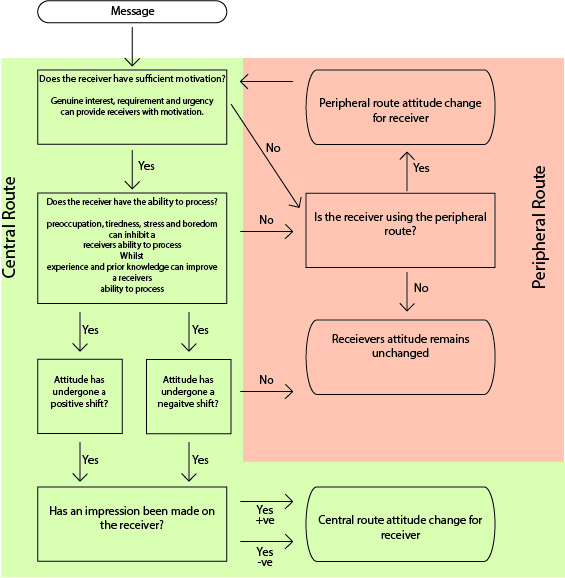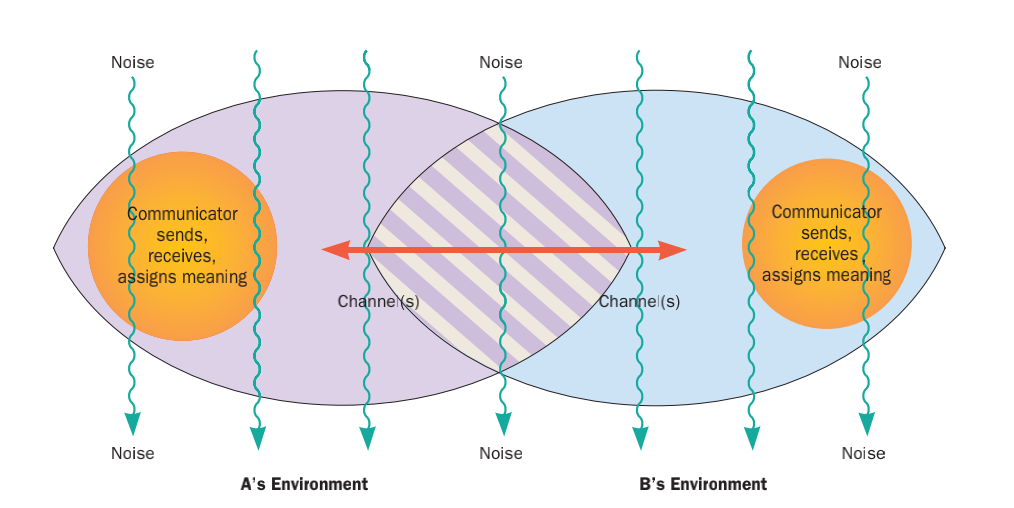|
Affiliative Conflict Theory
Affiliative conflict theory (ACT) is a social psychological approach that encompasses interpersonal communication and has a background in nonverbal communication. This theory postulates that "people have competing needs or desires for intimacy and autonomy" (Burgoon, p. 30). In any relationship, people will negotiate and try to rationalize why they are acting the way they are in order (approach and avoidance) to maintain a comfortable level of intimacy. History Affiliative conflict theory (ACT), also referred to as equilibrium theory or model, was first introduced in the 1960s by Michael Argyle (psychologist), Michael Argyle. His article "Eye Contact, Distance and Affiliation", co-authored with Janet Dean Fodor, Janet Dean was published in ''Sociometry'' in 1965, and has been used greatly as the base line for ACT. Michael Argyle had a long distinguished career in which he advanced the field of social psychology. His work on nonverbal communication greatly developed this theory ... [...More Info...] [...Related Items...] OR: [Wikipedia] [Google] [Baidu] |
Social Psychological
Social psychology is the methodical study of how thoughts, feelings, and behaviors are influenced by the actual, imagined, or implied presence of others. Although studying many of the same substantive topics as its counterpart in the field of sociology, psychological social psychology places more emphasis on the individual, rather than society; the influence of social structure and culture on individual outcomes, such as personality, behavior, and one's position in social hierarchies. Social psychologists typically explain human behavior as a result of the relationship between mental states and social situations, studying the social conditions under which thoughts, feelings, and behaviors occur, and how these variables influence social interactions. History 19th century In the 19th century, social psychology began to emerge from the larger field of psychology. At the time, many psychologists were concerned with developing concrete explanations for the different aspects of h ... [...More Info...] [...Related Items...] OR: [Wikipedia] [Google] [Baidu] |
Cognition
Cognition is the "mental action or process of acquiring knowledge and understanding through thought, experience, and the senses". It encompasses all aspects of intellectual functions and processes such as: perception, attention, thought, imagination, intelligence, the formation of knowledge, memory and working memory, judgment and evaluation, reasoning and computation, problem-solving and decision-making, comprehension and production of language. Cognitive processes use existing knowledge to discover new knowledge. Cognitive processes are analyzed from very different perspectives within different contexts, notably in the fields of linguistics, musicology, anesthesia, neuroscience, psychiatry, psychology, education, philosophy, anthropology, biology, systemics, logic, and computer science. These and other approaches to the analysis of cognition (such as embodied cognition) are synthesized in the developing field of cognitive science, a progressively autonomou ... [...More Info...] [...Related Items...] OR: [Wikipedia] [Google] [Baidu] |
Intimacy
An intimate relationship is an interpersonal relationship that involves emotional or physical closeness between people and may include sexual intimacy and feelings of romance or love. Intimate relationships are interdependent, and the members of the relationship mutually influence each other. The quality and nature of the relationship depends on the interactions between individuals, and is derived from the unique context and history that builds between people over time. Social and legal institutions such as marriage acknowledge and uphold intimate relationships between people. However, intimate relationships are not necessarily monogamous or sexual, and there is wide social and cultural variability in the norms and practices of intimacy between people. The course of an intimate relationship includes a formation period prompted by interpersonal attraction and a growing sense of closeness and familiarity. Intimate relationships evolve over time as they are maintained, and me ... [...More Info...] [...Related Items...] OR: [Wikipedia] [Google] [Baidu] |
Interpersonal Communication
Interpersonal communication is an exchange of information between two or more people. It is also an area of research that seeks to understand how humans use verbal and nonverbal cues to accomplish several personal and relational goals. Communication includes utilizing communication skills within one's surroundings, including physical and psychological spaces. It is essential to see the visual/nonverbal and verbal cues regarding the physical spaces. In the psychological spaces, self-awareness and awareness of the emotions, cultures, and things that are not seen are also significant when communicating. Interpersonal communication research addresses at least six categories of inquiry: 1) how humans adjust and adapt their verbal communication and nonverbal communication during Face-to-face interaction, face-to-face communication; 2) how messages are produced; 3) how uncertainty influences behavior and information-management strategies; 4) Interpersonal deception theory, deceptive com ... [...More Info...] [...Related Items...] OR: [Wikipedia] [Google] [Baidu] |
Communication Apprehension
Communication apprehension is a degree or measure of the glossophobia, anxiety triggered by the real or anticipated interpersonal communication, communication act, as defined by James C. McCroskey. The fear of judgment from the audience and self-image are two factors which fuel the anxiety. Since communication can be oral or written, communication apprehension (CA) is divided into oral communication apprehension (OCA) and written communication apprehension (WCA). Communication apprehension can cause a variety of involuntary responses such as "stomach butterflies" which is your body shutting the digestive system down and going into the fight-or-flight response, shaking, nausea, sweating, forgetting the information, among many others. The term oral communication apprehension is usually connected with stage fright; however, this response is not necessarily connected with a delivery on a stage or in front of a large audience. This anxiety can be caused by any of the four forms of comm ... [...More Info...] [...Related Items...] OR: [Wikipedia] [Google] [Baidu] |
Need For Affiliation
The need for affiliation (N-Affil) is a term which describes a person's need to feel a sense of involvement and "belonging" within a social group. The term was popularized by David McClelland, whose thinking was strongly influenced by the pioneering work of Henry Murray, who first identified underlying psychological human needs and motivational processes in 1938. It was Murray who set out a classification of needs, including achievement, power and affiliation, and placed these in the context of an integrated motivational model. People with a high need for affiliation require warm interpersonal relationships and approval from those with whom they have regular contact. Having a strong bond with others make a person feel as if they are a part of something important that creates a powerful impact. People who place high emphasis on affiliation tend to be supportive team members, but may be less effective in leadership positions. A person who takes part in a group, whether it be a movem ... [...More Info...] [...Related Items...] OR: [Wikipedia] [Google] [Baidu] |
Eye-contact
Eye contact occurs when two people or non-human animals look at each other's eyes at the same time. In people, eye contact is a form of nonverbal communication and can have a large influence on social behavior. Coined in the early to mid-1960s, the term came from the West to often define the act as a meaningful and important sign of confidence and respect. The customs, meaning, and significance of eye contact can vary greatly between societies, neurotypes, and religions. The study of eye contact is sometimes known as ''oculesics''. Social meanings Eye contact and facial expressions provide important social and emotional information. People, perhaps without consciously doing so, search other's eyes and faces for positive or negative mood signs. In some contexts, the meeting of eyes arouses strong emotions. Eye contact provides some of the strongest emotions during a social conversation. This primarily is because it provides details on emotions and intentions. In a group, if e ... [...More Info...] [...Related Items...] OR: [Wikipedia] [Google] [Baidu] |
The Gaze
In critical theory, philosophy, sociology, and psychoanalysis, the gaze (French: ''le regard''), in the figurative sense, is an individual's (or a group's) awareness and perception of other individuals, other groups, or oneself. Since the 20th century, the concept and the social applications of the gaze have been defined and explained by phenomenologist, existentialist, and post-structuralist philosophers. Jean-Paul Sartre described the gaze (or the look) in ''Being and Nothingness'' (1943). Michel Foucault, in '' Discipline and Punish: The Birth of the Prison'' (1975), developed the concept of the gaze to illustrate the dynamics of socio-political power relations and the social dynamics of society's mechanisms of discipline. Jacques Derrida, in '' The Animal That Therefore I Am (More to Come)'' (1997), elaborated upon the inter-species relations that exist among human beings and other animals, which are established by way of the gaze. Psychoanalysis In Lacanian psychoanalytic ... [...More Info...] [...Related Items...] OR: [Wikipedia] [Google] [Baidu] |
Anxiety
Anxiety is an emotion characterised by an unpleasant state of inner wikt:turmoil, turmoil and includes feelings of dread over Anticipation, anticipated events. Anxiety is different from fear in that fear is defined as the emotional response to a present threat, whereas anxiety is the anticipation of a future one. It is often accompanied by nervous behavior such as pacing back and forth, Somatic anxiety, somatic complaints, and Rumination (psychology), rumination. Anxiety is a feeling of uneasiness and worry, usually generalized and unfocused as an overreaction to a situation that is only subjectively seen as menacing. It is often accompanied by muscular tension, restlessness, Fatigue (medical), fatigue, inability to catch one's breath, tightness in the abdominal region, nausea, and problems in concentration. Anxiety is closely related to fear, which is a response to a real or perceived immediate threat (fight-or-flight response); anxiety involves the expectation of a future t ... [...More Info...] [...Related Items...] OR: [Wikipedia] [Google] [Baidu] |
Autonomy
In developmental psychology and moral, political, and bioethical philosophy, autonomy is the capacity to make an informed, uncoerced decision. Autonomous organizations or institutions are independent or self-governing. Autonomy can also be defined from a human resources perspective, where it denotes a (relatively high) level of discretion granted to an employee in his or her work. In such cases, autonomy is known to generally increase job satisfaction. Self-actualized individuals are thought to operate autonomously of external expectations. In a medical context, respect for a patient's personal autonomy is considered one of many fundamental ethical principles in medicine. Sociology In the sociology of knowledge, a controversy over the boundaries of autonomy inhibited analysis of any concept beyond relative autonomy, until a typology of autonomy was created and developed within science and technology studies. According to it, the institution of science's existing autonom ... [...More Info...] [...Related Items...] OR: [Wikipedia] [Google] [Baidu] |
Privacy
Privacy (, ) is the ability of an individual or group to seclude themselves or information about themselves, and thereby express themselves selectively. The domain of privacy partially overlaps with security, which can include the concepts of appropriate use and Information security, protection of information. Privacy may also take the form of bodily integrity. Throughout history, there have been various conceptions of privacy. Most cultures acknowledge the right of individuals to keep aspects of their personal lives out of the public domain. The right to be free from unauthorized invasions of privacy by governments, corporations, or individuals is enshrined in the privacy laws of many countries and, in some instances, their constitutions. With the rise of technology, the debate regarding privacy has expanded from a bodily sense to include a digital sense. In most countries, the right to digital privacy is considered an extension of the original right to privacy, and many count ... [...More Info...] [...Related Items...] OR: [Wikipedia] [Google] [Baidu] |







